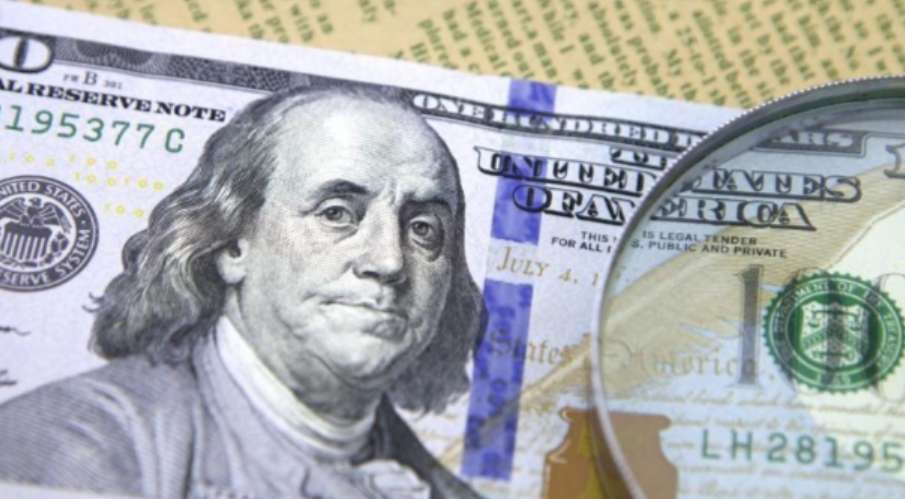Surge in US Stocks Amidst Peculiar RMB Trends
Advertisements
- December 21, 2024
In a stunning series of economic developments, the U.S. dollar index recently experienced a sharp decline, while the American stock market surged. This rapid fluctuation in currency and equity markets has led to some unusual trends in the renminbi's exchange rate, raising eyebrows among analysts and investors alike.
Across the U.S. markets, there seems to be a chaotic logic at play. Market expectations are swinging dramatically between employment statistics and inflation figures. Observers note that Wall Street appears to be in a frenzied state, with many suggesting that the financial wizards are playing a high-stakes game of speculation ahead of key data releases slated for January 20th.
Just days ago, the release of exceptionally strong non-farm payroll data seemed to signal a decline in interest rate cut expectations from the Federal Reserve. In fact, some financial institutions went as far as predicting that interest rates might rise again soon. This backdrop propelled the dollar index to new heights, surpassing the 110 mark and reaching its highest level in over two years.
However, the tides turned abruptly today. The dollar index plummeted by 60 points in a matter of moments, a shocking shift that triggered a spike in gold prices. This sudden downturn in the dollar was coupled with a robust opening for U.S. equities; all three major stock indices continued their climb, with the Nasdaq soaring past a 2% increase and the Russell 2000, which represents small-cap stocks, climbing by 2.3%.
For those bullish on U.S. stocks, the mood has brightened, albeit those awaiting a market correction will have to remain patient a little longer. The catalyst for this market reversal was the release of inflation data which signaled a decrease in inflationary pressures in the U.S., rekindling expectations that the Federal Reserve may lessen interest rates once again.
The inflation statistics are indeed noteworthy. For December, the Consumer Price Index (CPI) showed a year-on-year rise of 2.9%, matching market expectations but marking the highest level since July of the previous year. Such data underlines the persistent pressure in consumer pricing even as the overall rate remains manageable.
Examining the core CPI data reveals a year-on-year increase of 3.2%, marginally falling short of the projected 3.3%. This core gauge excludes more volatile food and energy prices, offering a clearer picture of long-term inflation trends. Its performance hints at easing inflationary pressures when short-term fluctuations are disregarded.
Moreover, the "super core CPI," a favorite among Federal Reserve officials, climbed by 0.28% month-on-month, leading to an annualized inflation rate drop to 4.17%. This refined indicator focuses on price changes in services and housing costs, and its modest increase raises further skepticism regarding immediate inflation threats.
Intriguingly, while the year-on-year CPI reading met expectations, both the core and super core CPI figures fell short. Collectively, this data does not indicate any widespread surprises, yet market participants interpreted it as a signal that inflationary pressures are easing, which in turn bolstered expectations for further interest rate cuts by the Federal Reserve.

Why such a reaction? Following the robust employment data previously, there was a prevailing sentiment that the Fed’s cycle of interest rate cuts might soon draw to a close. Yet, comments from various Fed officials suggested that although jobs data was strong, it had not reached a point indicative of overheating—implying continued easing was still on the table. Today’s inflation data aligned with this sentiment, thereby causing market expectations to tilt back towards the likelihood of further rate cuts.
The Federal Reserve's decision to step down interests rates provides liquidity to the market, which directly contributed to the dollar's recent drop and the concurrent rally in U.S. stocks. In fact, other asset classes have also reacted; crude oil prices surged, and the Japanese yen gained strength against the dollar.
However, what's curious is the offshore renminbi exchange rate's relative stability despite the dollar's plunge. It has not reflected the anticipated strengthening, hovering around 7.34, indicating a stark contrast to historical patterns where the renminbi would respond closely to shifts in the dollar index, much like the yen.
This deviation raises concerns about underlying pressures on the renminbi, suggesting persistent devaluation risks despite recent drops in value. Historical trends suggest the renminbi should have mirrored the dollar’s movements more closely; instead, its inability to appreciate signals that substantial downward pressure remains.
Investors and analysts must navigate this tricky landscape carefully. The challenges presented by these recent developments will require a nuanced understanding of inflation, employment data, and currency movements, all of which intertwine to shape the broader financial scenario in the U.S. and beyond. As the markets adjust and respond in real time, the balance of risk and opportunity remains precarious, demanding vigilance and strategic foresight from all market participants.
Leave A Comment